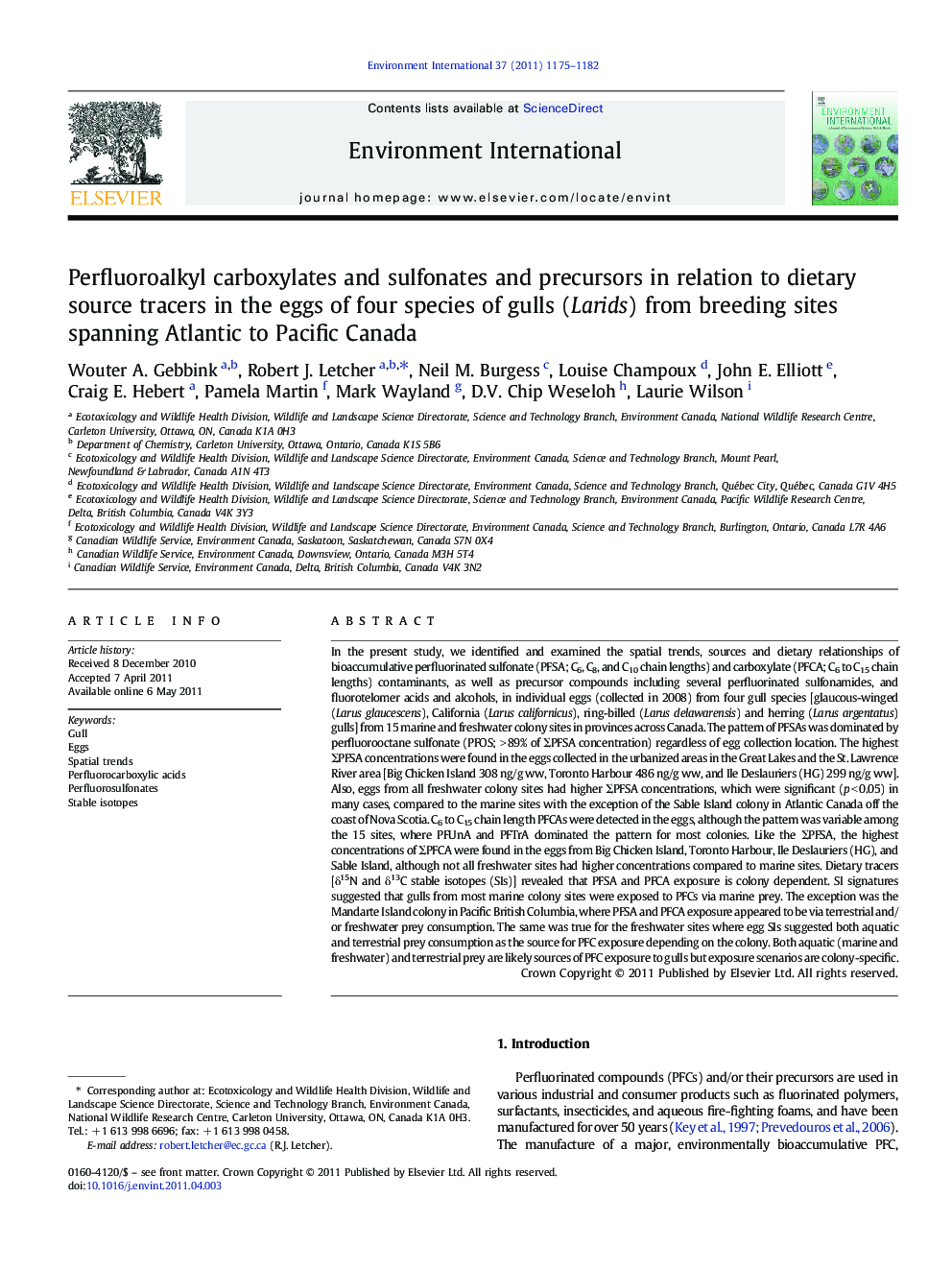| کد مقاله | کد نشریه | سال انتشار | مقاله انگلیسی | نسخه تمام متن |
|---|---|---|---|---|
| 4423175 | 1308814 | 2011 | 8 صفحه PDF | دانلود رایگان |

In the present study, we identified and examined the spatial trends, sources and dietary relationships of bioaccumulative perfluorinated sulfonate (PFSA; C6, C8, and C10 chain lengths) and carboxylate (PFCA; C6 to C15 chain lengths) contaminants, as well as precursor compounds including several perfluorinated sulfonamides, and fluorotelomer acids and alcohols, in individual eggs (collected in 2008) from four gull species [glaucous-winged (Larus glaucescens), California (Larus californicus), ring-billed (Larus delawarensis) and herring (Larus argentatus) gulls] from 15 marine and freshwater colony sites in provinces across Canada. The pattern of PFSAs was dominated by perfluorooctane sulfonate (PFOS; > 89% of ΣPFSA concentration) regardless of egg collection location. The highest ΣPFSA concentrations were found in the eggs collected in the urbanized areas in the Great Lakes and the St. Lawrence River area [Big Chicken Island 308 ng/g ww, Toronto Harbour 486 ng/g ww, and Ile Deslauriers (HG) 299 ng/g ww]. Also, eggs from all freshwater colony sites had higher ΣPFSA concentrations, which were significant (p < 0.05) in many cases, compared to the marine sites with the exception of the Sable Island colony in Atlantic Canada off the coast of Nova Scotia. C6 to C15 chain length PFCAs were detected in the eggs, although the pattern was variable among the 15 sites, where PFUnA and PFTrA dominated the pattern for most colonies. Like the ΣPFSA, the highest concentrations of ΣPFCA were found in the eggs from Big Chicken Island, Toronto Harbour, Ile Deslauriers (HG), and Sable Island, although not all freshwater sites had higher concentrations compared to marine sites. Dietary tracers [δ15N and δ13C stable isotopes (SIs)] revealed that PFSA and PFCA exposure is colony dependent. SI signatures suggested that gulls from most marine colony sites were exposed to PFCs via marine prey. The exception was the Mandarte Island colony in Pacific British Columbia, where PFSA and PFCA exposure appeared to be via terrestrial and/or freshwater prey consumption. The same was true for the freshwater sites where egg SIs suggested both aquatic and terrestrial prey consumption as the source for PFC exposure depending on the colony. Both aquatic (marine and freshwater) and terrestrial prey are likely sources of PFC exposure to gulls but exposure scenarios are colony-specific.
Research Highlights
► PFSAs and PFCAs found in eggs of four gull species from colony sites across Canada.
► The dominate PFSA, PFOS had concentrations in eggs highest from urban colony sites.
► Freshwater colony eggs had higher PFOS compared to the marine colony sites.
► C11 and C13 PFCAs dominated the PFCA pattern in eggs from most colony sites.
► Stable isotope tracers of diet showed PFCs for marine colonies were from marine prey.
Journal: Environment International - Volume 37, Issue 7, October 2011, Pages 1175–1182